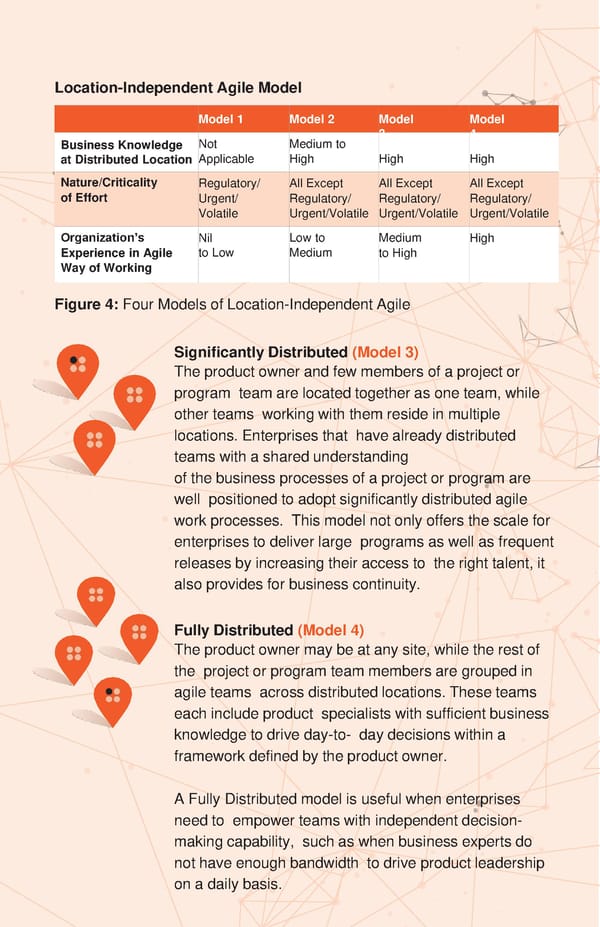Location-Independent Agile Model Model 1 Model 2 Model Model Business Knowledge Not Medium to 3 4 at Distributed Location Applicable High High High Nature/Criticality Regulatory/ All Except All Except All Except of Effort Urgent/ Regulatory/ Regulatory/ Regulatory/ Volatile Urgent/Volatile Urgent/Volatile Urgent/Volatile Organization’s Nil Low to Medium High Experience in Agile to Low Medium to High Way of Working Figure 4: Four Models of Location-Independent Agile Significantly Distributed (Model 3) The product owner and few members of a project or program team are located together as one team, while other teams working with them reside in multiple locations. Enterprises that have already distributed teams with a shared understanding of the business processes of a project or program are well positioned to adopt significantly distributed agile work processes. This model not only offers the scale for enterprises to deliver large programs as well as frequent releases by increasing their access to the right talent, it also provides for business continuity. Fully Distributed (Model 4) The product owner may be at any site, while the rest of the project or program team members are grouped in agile teams across distributed locations. These teams each include product specialists with sufficient business knowledge to drive day-to- day decisions within a framework defined by the product owner. A Fully Distributed model is useful when enterprises need to empower teams with independent decision- making capability, such as when business experts do not have enough bandwidth to drive product leadership on a daily basis.
 Successfully Implementing Location-Independent Agile Teams Page 2 Page 4
Successfully Implementing Location-Independent Agile Teams Page 2 Page 4